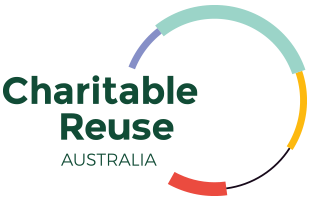Clothing Textiles Roadmap Solution
NACRO has a vision for a Circular Textiles Economy, and it begins with the overarching perspective that clothing textiles donated to charities are a resource, not a waste.
Clothing textiles are a valuable resource in Australia’s economy, whether they are new – or about to be reused. In fact, a pre-loved item made from quality fibres and donated to a charity store for reuse may well be much more of a resource than a ‘new’ poorly made, ‘fast fashion’ item designed for limited use. Donated for reuse, clothing textiles can be reused many times until the end of life, when its quality fibres make it more suitable and economical for recycling.
A network of 3,000 charitable op shops ensure reuse throughout Australia. Some clothing is exported, and these are also donated items intended for reuse. The only difference between exported items and the items sold in op shops, is that they are of a slightly lesser grade without a viable reuse/resale market in Australia – but perfectly ideal and in high demand for developing countries overseas with consumers of limited purchasing power. In addition to serving a vital need overseas, the export trade generates millions of dollars in revenue for Australian charities, that goes directly toward social welfare programs for the most disadvantaged people and communities at home.
The clothing textile export trade cannot be defined as ‘waste’. The clothing has not been ‘discarded as waste’, it has been ‘gifted for reuse as a resource’. The charitable organisations and commercial suppliers operating in this trade are not paid to collect the items, and have no incentives to discard them. This ‘resource’ business model makes it essential to find reuse markets and generate revenue through sales of the resource – it is a valuable commodity.
In terms of clothing textiles, very little is lost as waste to landfill – so long as the resource enters the charitable reuse and recycling sector system. Some NACRO members even report up to 80-90% resource recovery rates in clothing textiles – with total usage including reuse/resale in shops, donations to those in need, ragging, recycling, repurposing and export. The vast majority of textile waste to landfill is generated outside of the charitable sector system – by consumers and businesses that erroneously send it straight to landfill, instead of donating it.
That’s why NACRO has developed a 3-Stage, 10-year Roadmap to Clothing Textile Solutions. Click here to see NACRO’s roadmap, which is included in the Federal Inquiry submission.


